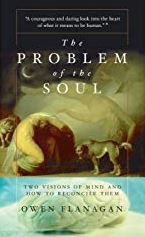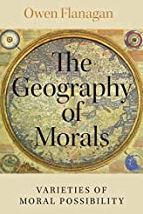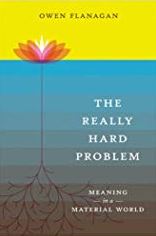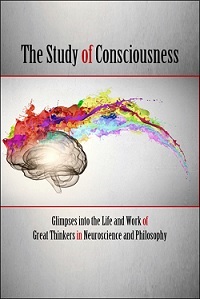|
TRANSLATE THIS ARTICLE
Integral World: Exploring Theories of Everything
An independent forum for a critical discussion of the integral philosophy of Ken Wilber
 David Christopher Lane, Ph.D.
Professor of Philosophy, Mt. San Antonio College Lecturer in Religious Studies, California State University, Long Beach Author of Exposing Cults: When the Skeptical Mind Confronts the Mystical (New York and London: Garland Publishers, 1994) and The Radhasoami Tradition: A Critical History of Guru Succession (New York and London: Garland Publishers, 1992). David Christopher Lane, Ph.D.
Professor of Philosophy, Mt. San Antonio College Lecturer in Religious Studies, California State University, Long Beach Author of Exposing Cults: When the Skeptical Mind Confronts the Mystical (New York and London: Garland Publishers, 1994) and The Radhasoami Tradition: A Critical History of Guru Succession (New York and London: Garland Publishers, 1992).
THE STUDY OF CONSCIOUSNESS
Glimpses into the Life and Work of Great Thinkers in Neuroscience and Philosophy
Chalmers |
Changeux |
Chomsky |
Churchland, Paul |
Churchland, Patricia |
Crick |
Dennett |
Edelman |
Flanagan |
Humphrey |
Huxley |
Koch |
Leary |
Lilly |
McKenna |
Nagel |
Tononi
Owen FlanaganPaycee MinayaConsciousness has long puzzled humanity and influenced human thought for generations. Perhaps one of the most coherent interpreters of consciousness is philosopher Owen Flanagan. Born in Westchester County, New York in 1949, Owen Flanagan is known primarily for his optimistic approach to understanding consciousness with a “unified theory of consciousness” which he dubs “Constructive Naturalism.” Flanagan received his Ph.D. in 1978 from Boston University. From 1978 to 1993, Flanagan worked as a professor of philosophy far Wellesley College. In 2016, he was recognized as a Berggruen Fellow at the Center for Advanced Study in the Behavioral Sciences at Stanford University and a Rockefeller Fellow at the National Humanities Center. In 1993, Flanagan took a position teaching philosophy at Duke University, where he currently works as a Distinguished Professor of Philosophy. His other interests include Moral Psychology, East Asian Philosophy, and Comparative Philosophy.  Owen Flanagan Flanagan defines consciousness as “a heterogeneous set of events and processes that share the property of being experienced. Consciousness is taken to name a set of processes, not a thing or a mental faculty”. In saying this, Flanagan brings to light the notion that consciousness is the recognition that one is able to recognize experience, which is brought about because of highly developed neural networks. In his book titled Consciousness Reconsidered, Flanagan considers the gaps between the phenomenological, psychological, and neuroscientific explanations for consciousness. To him, consciousness is rendered not by adopting an “either/or” mentality, but through a marriage between these disciplines. In considering both the scientific and philosophical nature of consciousness, Flanagan argues for a “constructive naturalist” theory of consciousness, one that intricately synthesizes these academic fields. In doing so, Flanagan creates a “science of the mind.” Three key elements of this budding science are: being attentive to subjective reports on consciousness, analyzing theories and results from psychology and cognitive science, and digesting conclusions from neuroscience that explore how systems in the brain produce consciousness. By emphasizing each element, Flanagan believes that it is possible to make consciousness--a completely convoluted and enigmatic concept--intelligible. According to Flanagan, there are several main philosophical positions on the problem of consciousness that open the discussion: nonnaturalism, principled agnosticism, anticonstructive naturalism, eliminitavist naturalism, and finally, the constructive naturalist theory he means to defend.
According to Flanagan, there is a substantial probability that “there is a large set of neural connections capable of subserving different kinds of conscious experience” and if this is true, then “then there exist generalizations linking the neural with the phenomenological”. He claims that if there are different sets of brain properties that are delegated to different types of conscious experiences, then there may very well be certain types of phenomenal experiences that do not map in clear-cut neurological pathways. An experiment involving monkeys helps justify this position. Flanagan reports on an experiment conducted to test the awareness and subjectivity of monkeys. In this experiment, scientists trained several monkeys to report whether they perceived a line moving up or moving down, which was achieved by training the monkeys to give bar-press reports or by training them to execute a saccade (a quick eye movement) to the left if a downward movement is perceived and to the right if an upward movement is perceived. Ultimately, this experiment showcases that a monkey's account of how images appear at any moment (its phenomenology) provides clear psychophysical data about the rate of monkey perception and the shifts in said perception. Upon analyzing this experiment, Flanagan concludes that “the phenomenological data… and the psychophysical data about the time between perceptual switches yield no information about what is going on in the brain, and in particular they yield no information about what neuronal events are involved in the shifting perceptions. This is where looking at the brain helps,” and why it is important to employ a holistic view of the brain. He later writes: “It is well known that monkeys have as many as 20-25 visual areas in the neocortex. The bulk of retinal output projects through the lateral geniculate nucleus of the thalamus to the primary visual cortex at the back of the brain that computes edges… Motion detection occurs primarily in the middle temporal and medial superior temporal areas in the superior temporal sulcus (STS). So the activity of neurons in the STS were monitored as the monkeys reported upward or downward motion. The study of the effect of the rival stimuli on 66 single neurons indicated that the "activity of many neurons was dictated by the retinal stimulation. Other neurons, however, reflected the monkeys' reported perception of motion direction" (Logothetis and Schall 1989, 761). The principle of supervenience says that every difference at the level of mentality must be subserved by a difference at some lower level (but perhaps not conversely). This experiment indicates how the robust phenomenological difference between an upward or downward moving image might be subserved (although undoubtedly not exclusively) by small but detectable changes in activity in the cortical areas subserving motion detection” Flanagan describes this theory as “neurophilosophical” in that it tries to synthesize a naturalistic metaphysic of mind with the wonky yet maturing understanding of how the brain works. To Flanagan, “the most plausible hypothesis is that the mind is the brain,” which is indicative of the naturalistic position he believes in. Thinking that consciousness is terminally mysterious is easy to fall for if we set impossibly high standards on explanation and intelligibility. With a constructive naturalistic viewpoint, consciousness simply cannot be considered at the surface. Though he believes that consciousness will still remain an elaborate, enigmatic concept, Flanagan believes that through constructive naturalism, we will be at least a step closer to navigating the maze of the mind. Flanagan proposes that scholars utilize the “natural method” to see if it there is the possibility of making consciousness intelligible. This method proposes three different modes of analysis, and provides steps for doing so. First, scholars must give phenomenology its credit. Then, scholars must listen carefully to what individuals have to say about how things seem and how they view consciousness. At this stage, it is necessary to let the psychologists and cognitive scientists contribute their views as well. Finally, scholars must consult neuroscientists and hear what they have to say specifically about how conscious mental events are realized, and how they can examine the overlap between their stories and the phenomenological and psychological stories. This view was proven in experiments cross-examining the behaviors of human beings and monkeys. This experiment found that both humans and monkeys react to stimuli that they are made aware of. This experiment demonstrates how subjective awareness can be studied by meshing information from different levels of analysis and techniques: “First, there is the assumption that there is something it is like for a monkey to have visual experience. Second, good old-fashioned psychological techniques of operant conditioning are used to train the monkeys to provide reports about what they see. Finally, these reports are linked with detailed observations of the activity of 66 distinct neurons to yield information about the distinct brain processes subserving perceptual experiences of upward and downward moving lines. This is knowledge by triangulation. The natural method works” In employing the natural method, Flanagan hopes to see whether and to what extent the three different accounts of consciousness--phenomenological, psychological, and neuroscientific--are congruent with one another. Further Reading1. The Problem of the Soul: Two Visions Of Mind And How To Reconcile Them, Basic Books (June 25, 2003) 2. The Geography of Morals: Varieties of Moral Possibility , Oxford University Press; 1 edition (October 24, 2016) 3. The Really Hard Problem: Meaning in a Material World , A Bradford Book; Reprint edition (February 13, 2009)    MSAC PHILOSOPHY GROUP
Human interest in the nature of consciousness dates far back to our ancestral past. However, it is only in the last century or so that researchers and philosophers have been able to tackle the problem in a more scientific way. This is primarily due to our increasing understanding of human physiology and how our brain functions. With the advent of ever more sophisticated technology—from fMRI scans, functional magnetic resonance imaging, to DARPA's neural engineering program, understanding neural “dust”—we are now able to not only create vivid simulations of cerebral activity but also to systematically reverse engineer the brain. Whether such empirical observations will unlock the secrets of self-reflective awareness is still open to vigorous debate. Nevertheless, the study of consciousness is now considered to be of elemental importance and has invited a large number of brilliant thinkers—from a wide range of disciplines, including mathematicians, quantum physicists, neuroscientists, and philosophers—to join in the discussions and offer their own contributions. The following essays briefly explore the life and work of pioneers in the field of consciousness studies. Included in this eclectic mix are such notables as Giulio Tononi (University of Wisconsin), Paul and Patricia Churchland (University of California, San Diego), Noam Chomsky (M.I.T.), the late Timothy Leary and Terence McKenna, and Jean Pierre Changeux (Collége de France) among others.
Comment Form is loading comments...
|